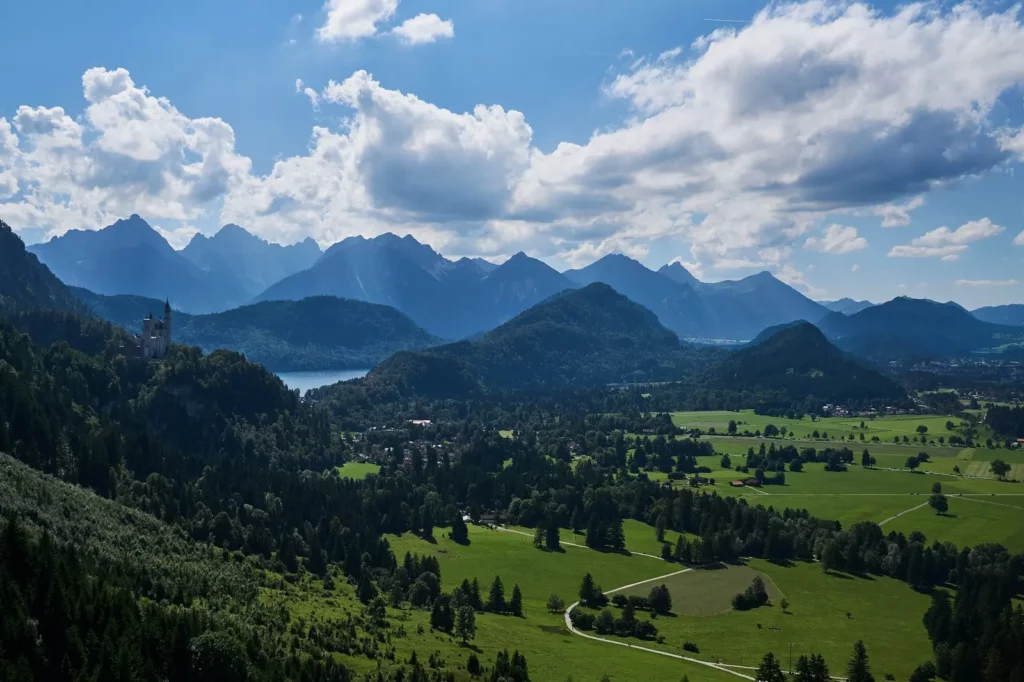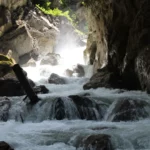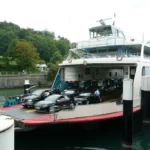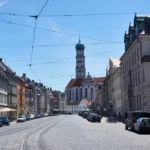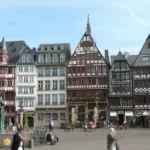Last Updated on 01/02/2023
The area where Neuschwanstein Castle is located is worth spending a few days there. Let’s see what we can do around Neuschwanstein castle: climb Tegelberg, hike along the Pöllat Gorge, visit Fussen and rest at four lakes.
Read about the two castles and the lake Alpsee in the first part.
Allgäu attractions map
Linderhof
Garmisch-Partenkirchen. 2. Around Partnachklamm
Zugspitze Arena
Oberbayern. Map of attractions
Schwangau
From Füssen you will have to get by bus 78 or bicycle. You can walk to Füssen on foot (5 km), but not after a long day spent in the castle and the surrounding area. From Füssen station to the Hohenschwangau stop – 10 minutes by bus or about 1 hour on foot.
When choosing a hotel, one should not forget that the name Schwangau includes several villages located by no means nearby for a pedestrian.
It is most convenient to have an accomodation in Schwangau itself, in Schwangau Horn or in Schwangau Alterschrofen. Schwangau Waltenhofen further from Füssen, castles and cable car, near the Forggensee lake. And Schangau Brunnen is even further away.
The best means of transportation between villages is a bicycle. It can be rented at the hotel or in the center of Schwangau.

Schwangau is the best place to stay. The village is located in the very center for tourists – an average of 30 minutes walk to Hohenschwangau, to the Tegelberg cable car, to the Schwansee lake, to the Forggensee lake.
In Schwangau there is now also a new Adventure Castle Golf course.
Then we will move through the sights starting from Neuschwanstein Castle counterclockwise: Pöllat Gorge, Tegelberg, Forggensee, Füssen, Waterfall on Lech, Schwansee.
Pöllat gorge
Neuschwanstein Castle rises above Pöllat Gorge. You can get to the beginning of the gorge from the castle ticket office, if you go through the village towards the cable car (the castle will be above you on the right) and then turn right.
You can walk along the gorge with steep walls and a mountain stream on special footbridges built right into the rock. At the end is a waterfall, the highest point of which is located directly under the Marienbrücke bridge.
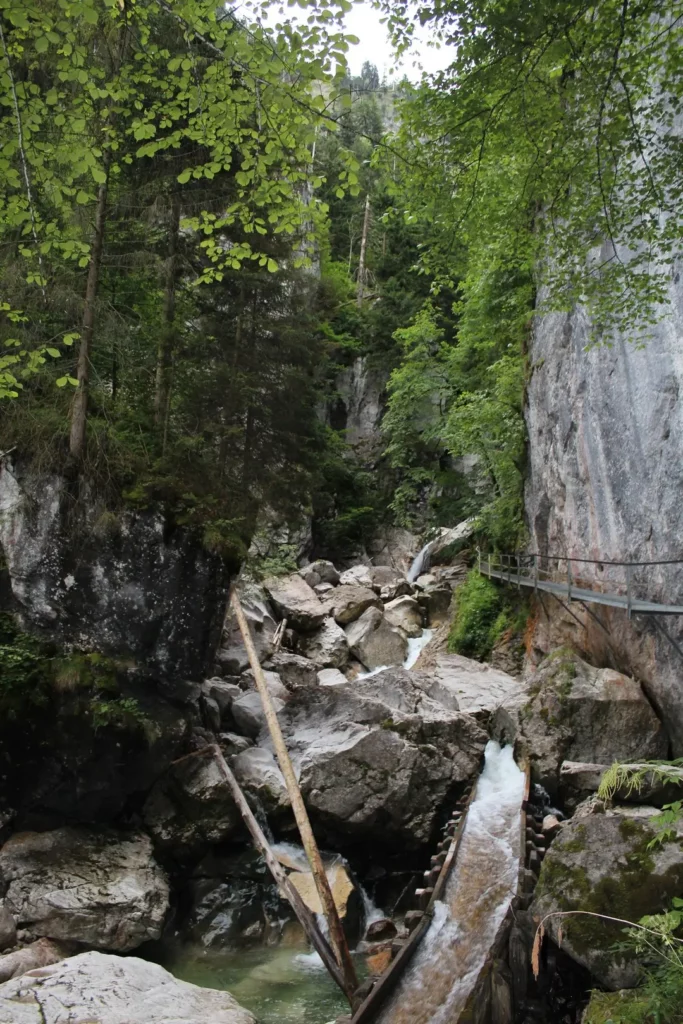
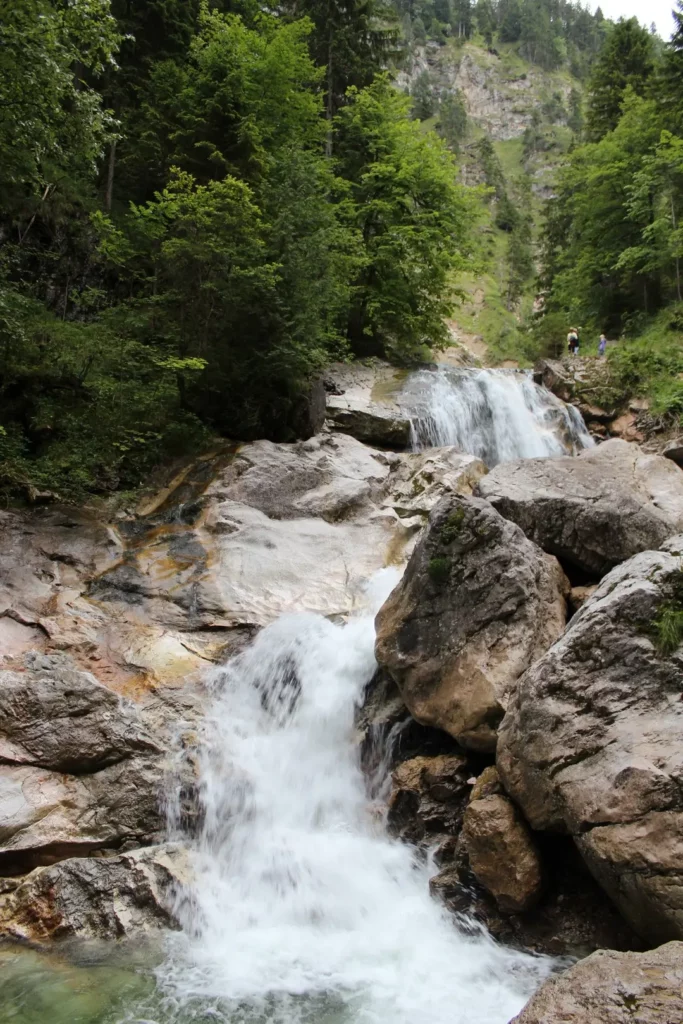
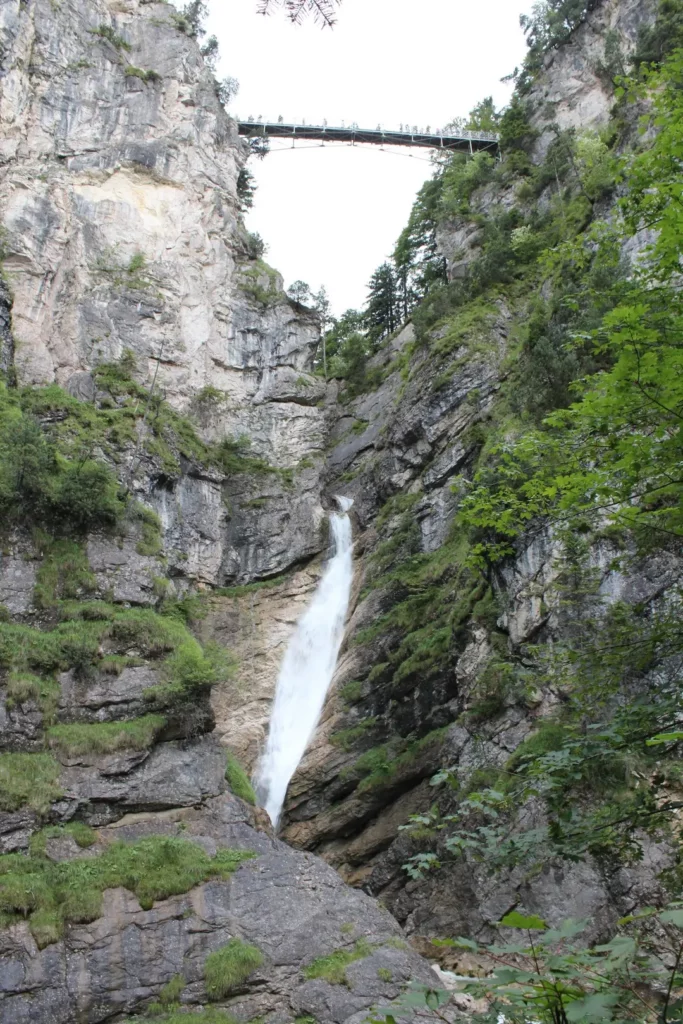
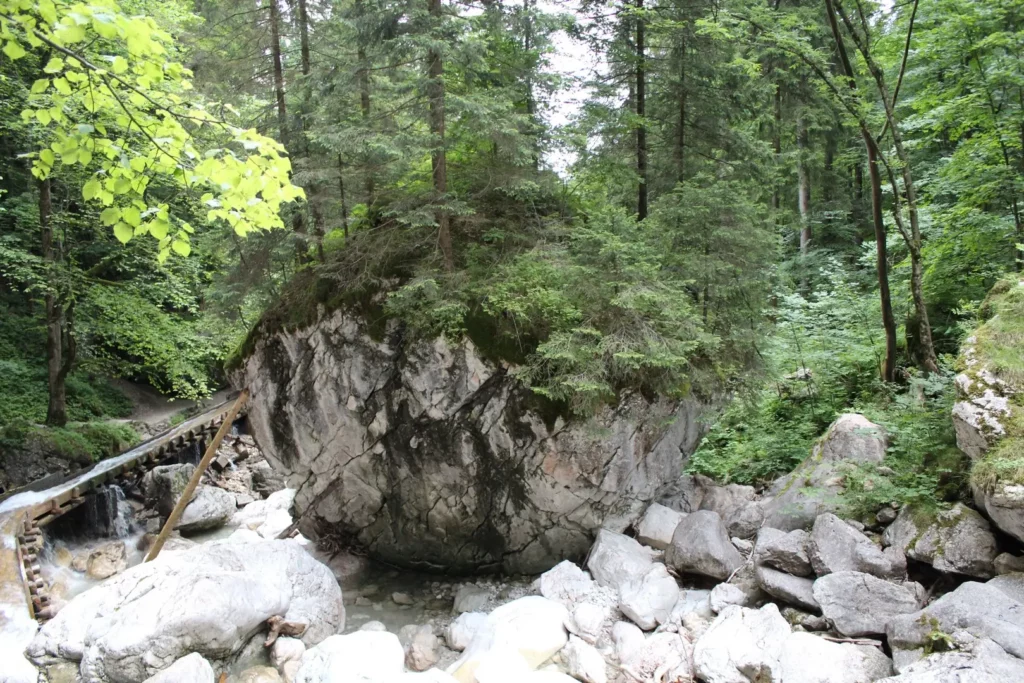
Tegelberg
Tegelberg is a mountain for hiking and paragliding. If you’re looking for neither, you might be interested in the King’s Path, which leads from the top station of the cable car to Marienbrücke. The King’s Path is named because even Ludwig and his father climbed here.
View from the trail

The trail is equipped: steps, bridges are made, in some places cables are stretched along the rock.
If you wish, you can go only the first part of the path from the bridge – in several places there is a beautiful view of the castle – and go back to the bridge. Then the trail goes to the other side of the mountain and the castle is not visible. At the very end of the trail, – a steep staircase without a hint of any shadow, turning into a steep climb without steps. The elevation difference from Hohenschwangau to Tegelberg is 1000 meters.
On Tegelberg you will find a small cafe and hang gliding launch pad. Then you can go down, or you can go up to the next peak or down another way: a short one along the road to the lower cable car station or a long one through the Pöllat gorge, which will take 3 and a half hours.
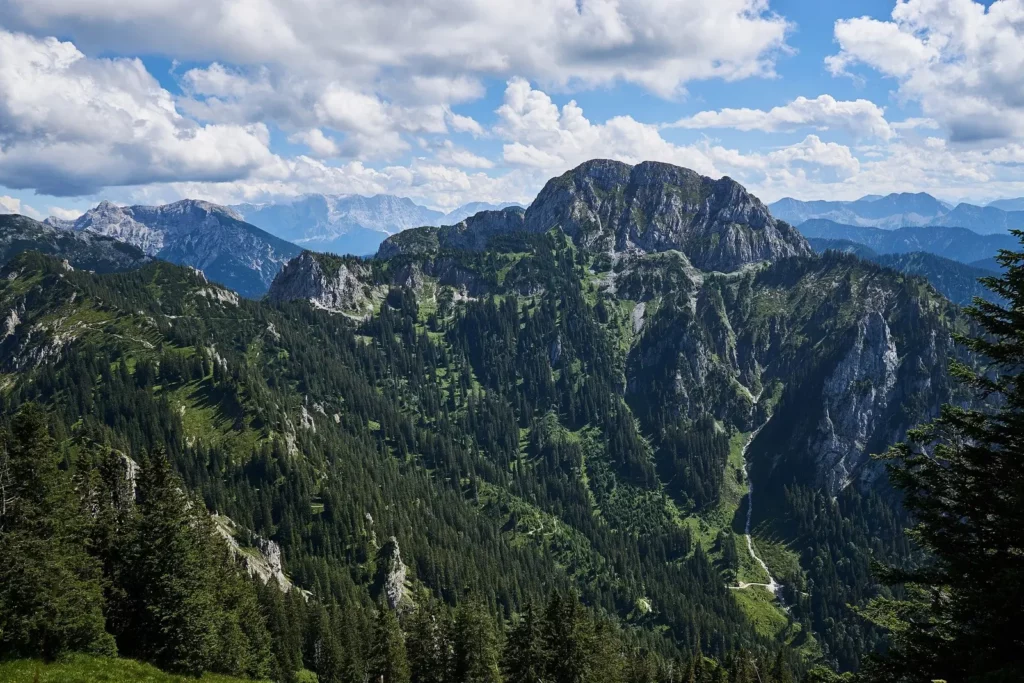
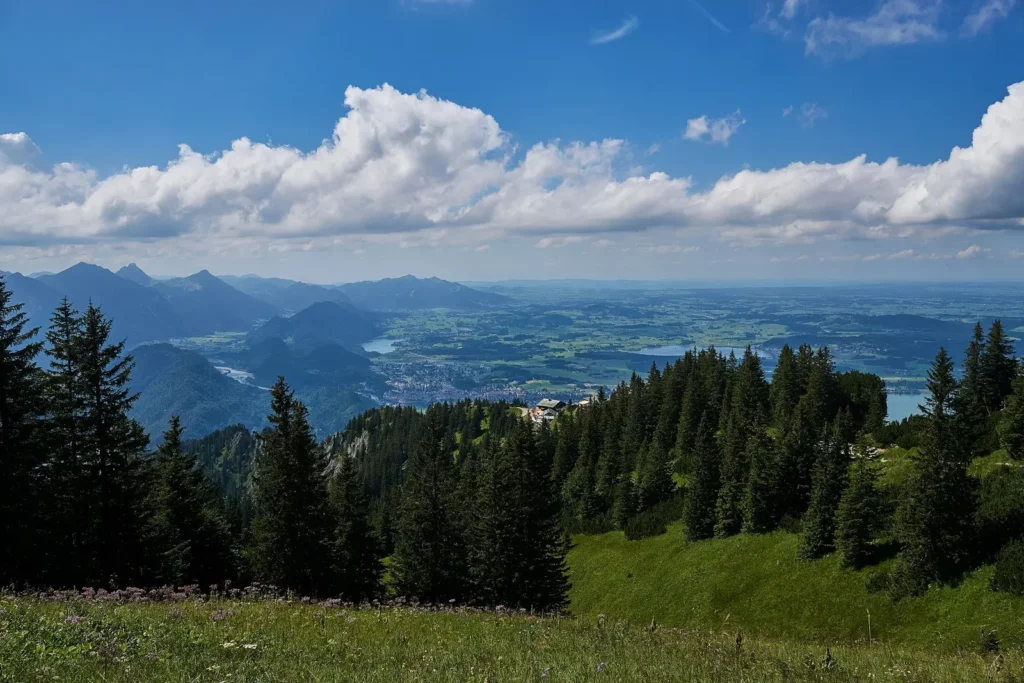

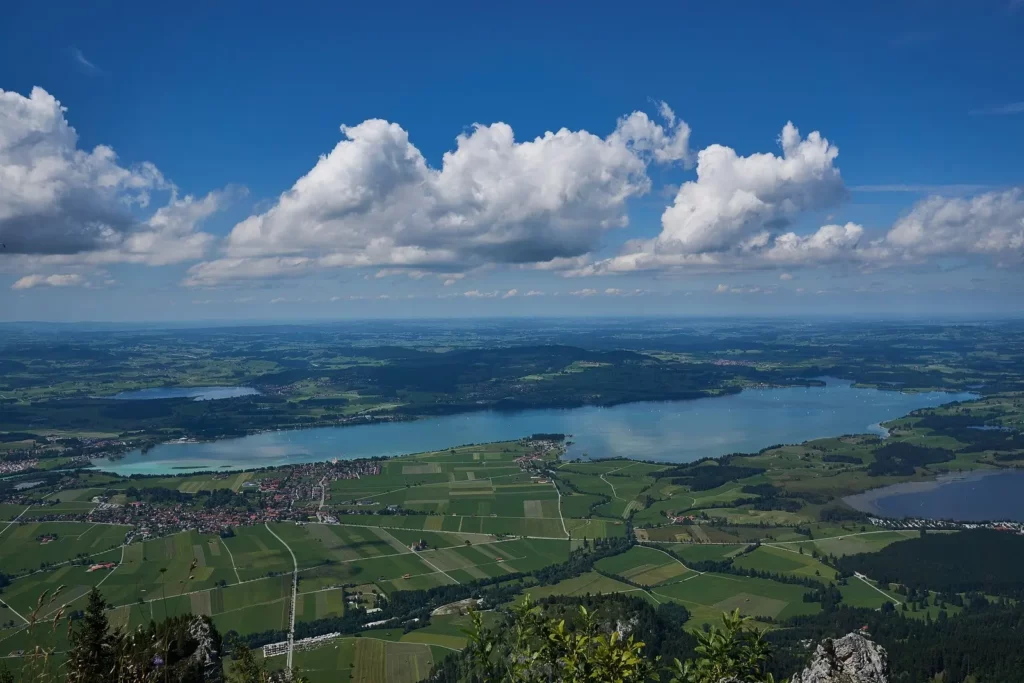
Summertoboggan
At the lower station of the cable car to Tegelberg there is a fairly common entertainment in the Alps – summer toboggan sledges. Anyone can ride for about 3 euros.
Forggensee
Another form of entertainment is a boating on the Forggensee. Forggensee is a reservoir, and under Ludwig, of course, it did not yet exist.
The Lech that fills the Forggensee is a stormy and full-flowing river, and the reservoir prevents floods, although sometimes the river still floods nearby lands. The energy of the river is used to generate electricity, and a new power plant is being built there. In the winter, the reservoir is lowered, and in the spring it is filled again.


Füssen

Füssen is an old town with houses from the 14th and 15th centuries lined up and brightly painted. Here you can see:
- Reichenstrasse is a pedestrian street made up of historic houses of aristocrats. Previously, the Roman road of Claudius Augustus passed here, and now it is a shopping street. At the end of the street near the castle is the city fountain depicting St. Magnus, the patron saint of the city.
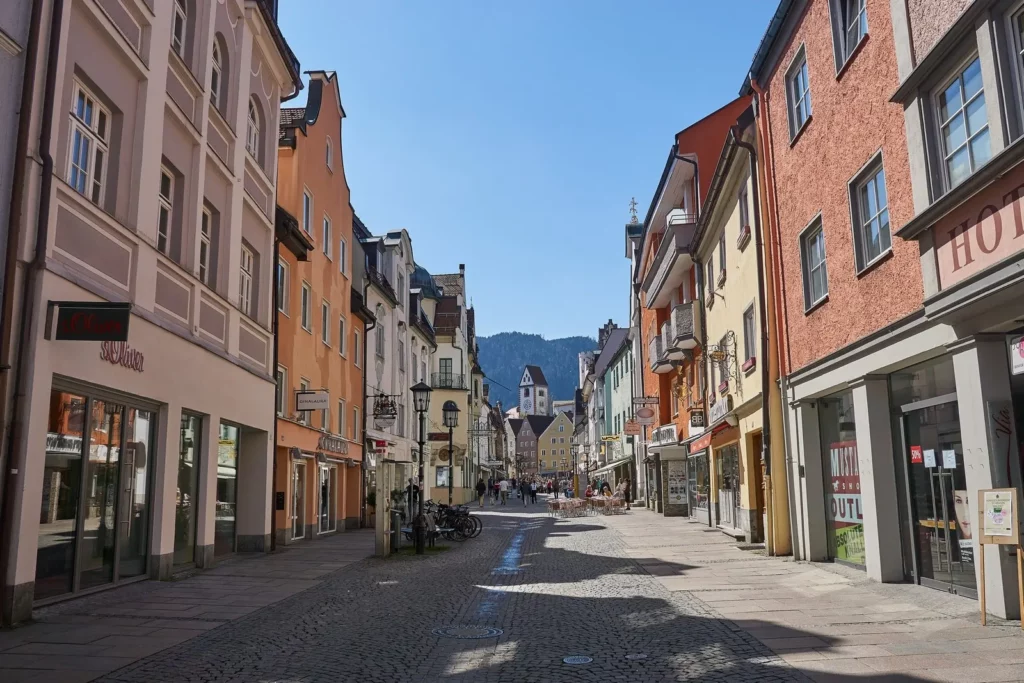

- The High Palace (Hohen Schloss) is the former residence of the Archbishop of Augsburg, one of the most important late Gothic castle complexes in Germany. It is now the city’s art gallery and part of the Bavarian State Collection, which features late Gothic and Renaissance art.
In the foreground, the monastery of St. Magnus, above it the High Palace.
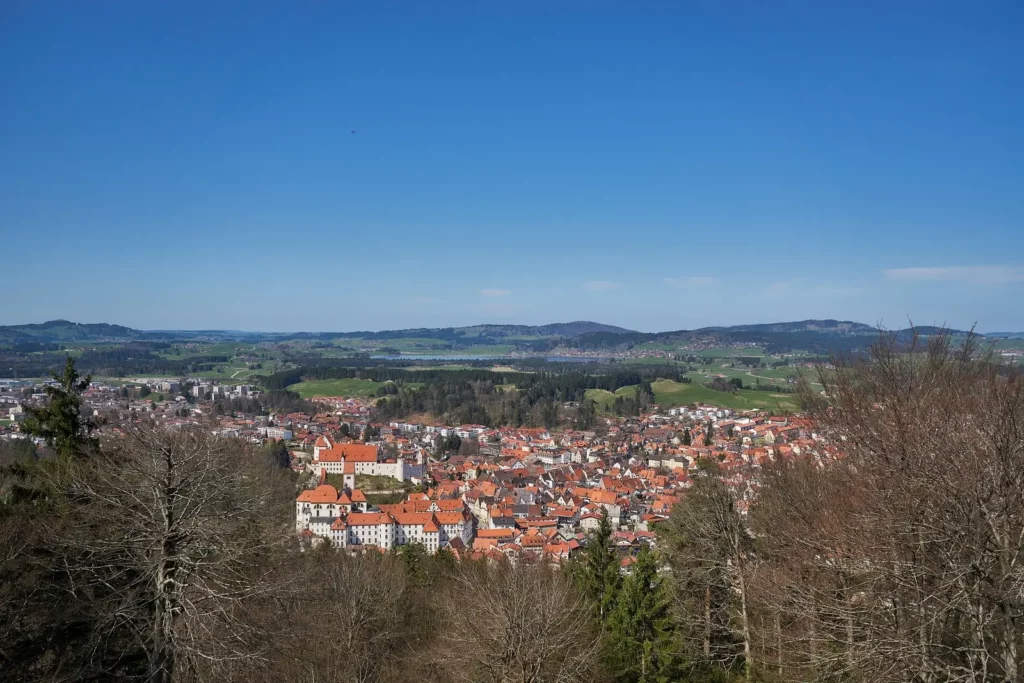
- monastery and basilica of St. Magnus – a former Benedictine monastery, dates back to the 9th century. The modern building is an example of the Baroque. Now here are the city authorities and the museum of the city. The museum contains archaeological finds, works of art and church treasures, as well as one of the finest European collections of ancient musical instruments. The oldest Bavarian frescoes (c. 980) have been preserved in the basilica.
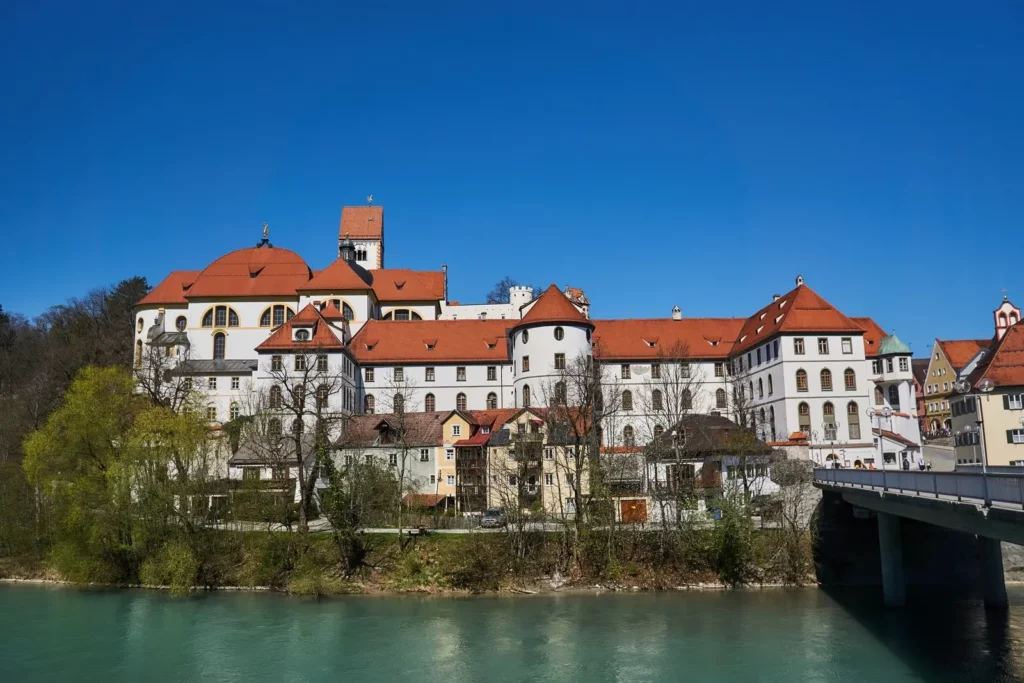
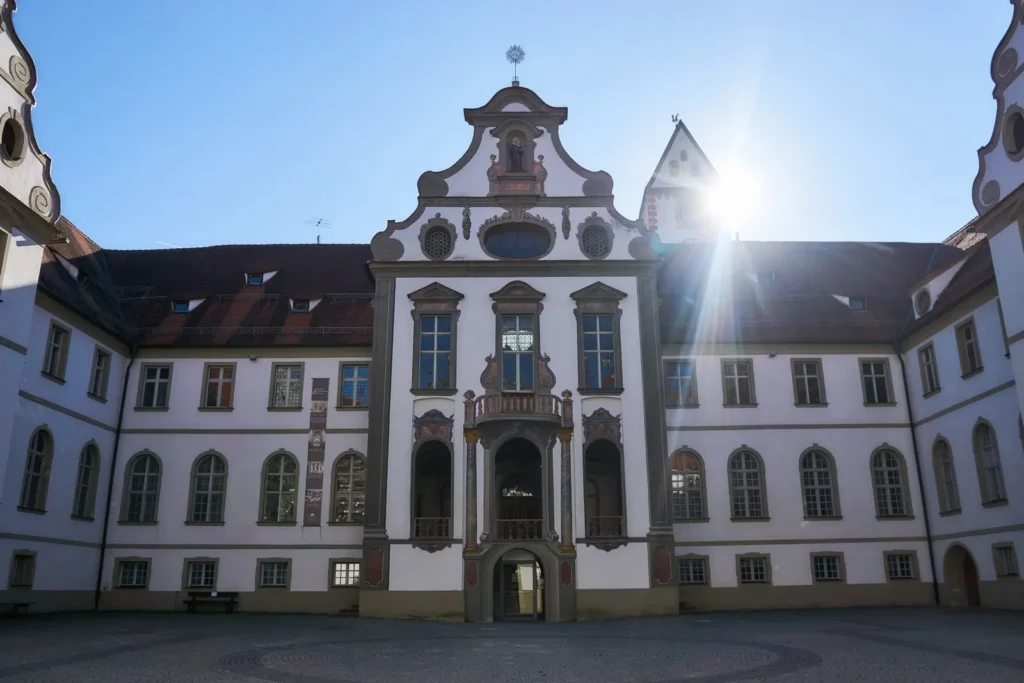
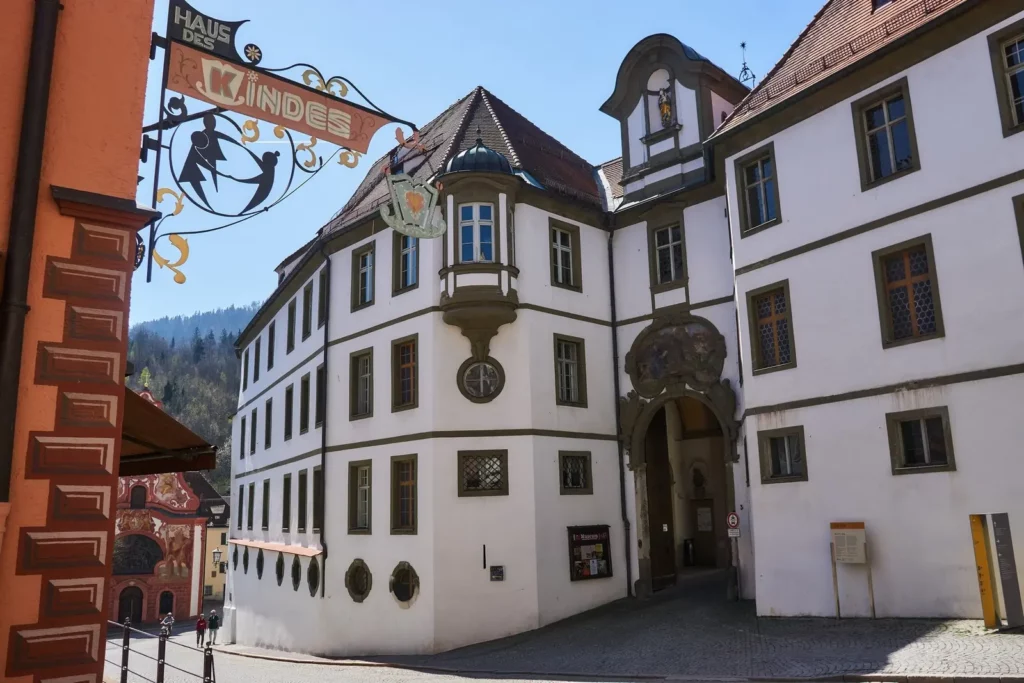
- To the right, as seen from the bridge, is the hospital church of the Holy Spirit in the Rococo style. Dedicated to St. Florian to protect the city from fires, and to St. Christopher, the patron saint of raftsmen.
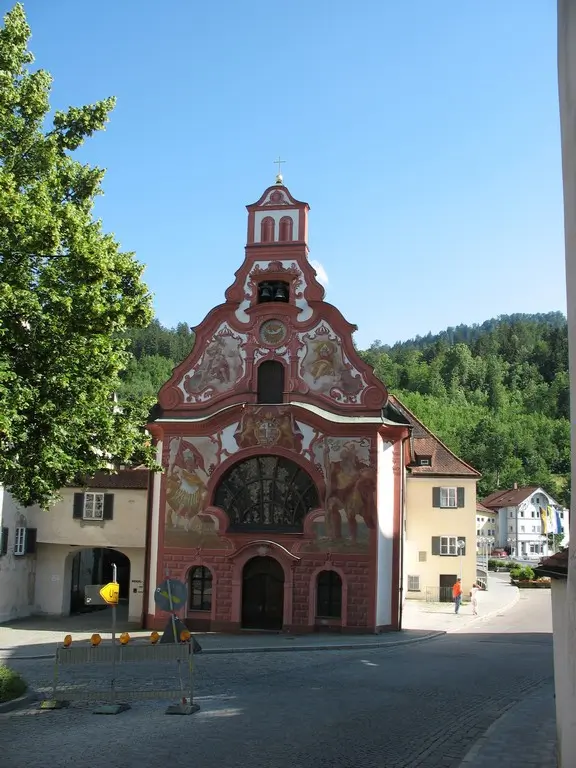
- The Franciscan monastery (17th-18th centuries) is located on a small hill near the Lech River, closer to the Forggensee. From here you have a beautiful view of the medieval city center. Nearby there is the old cemetery of St. Sebastian. Franciscan monastery on the left
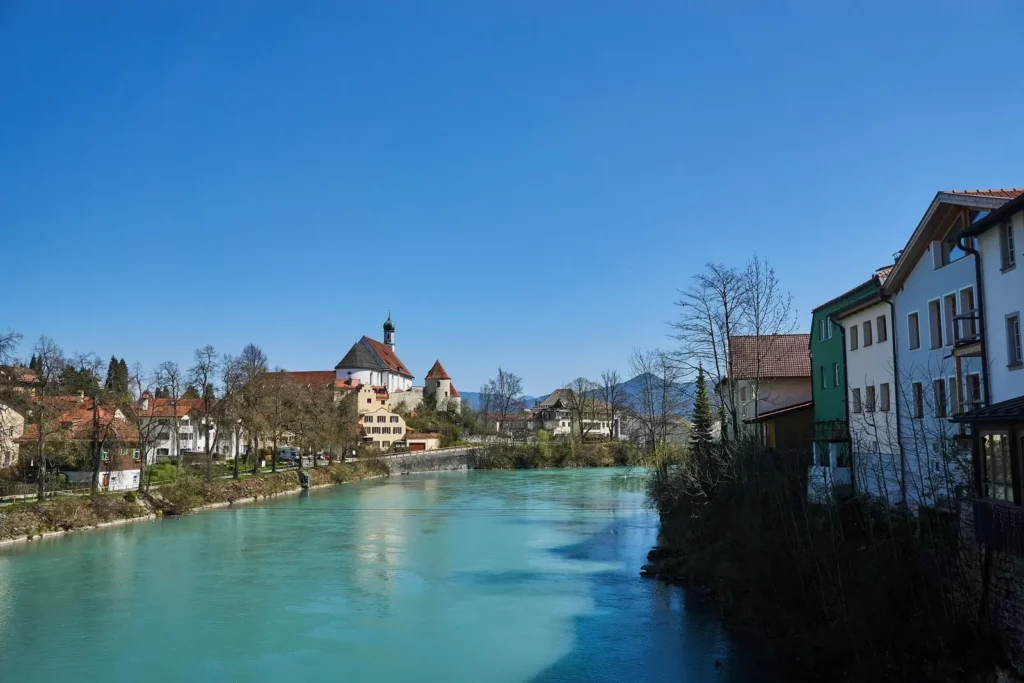
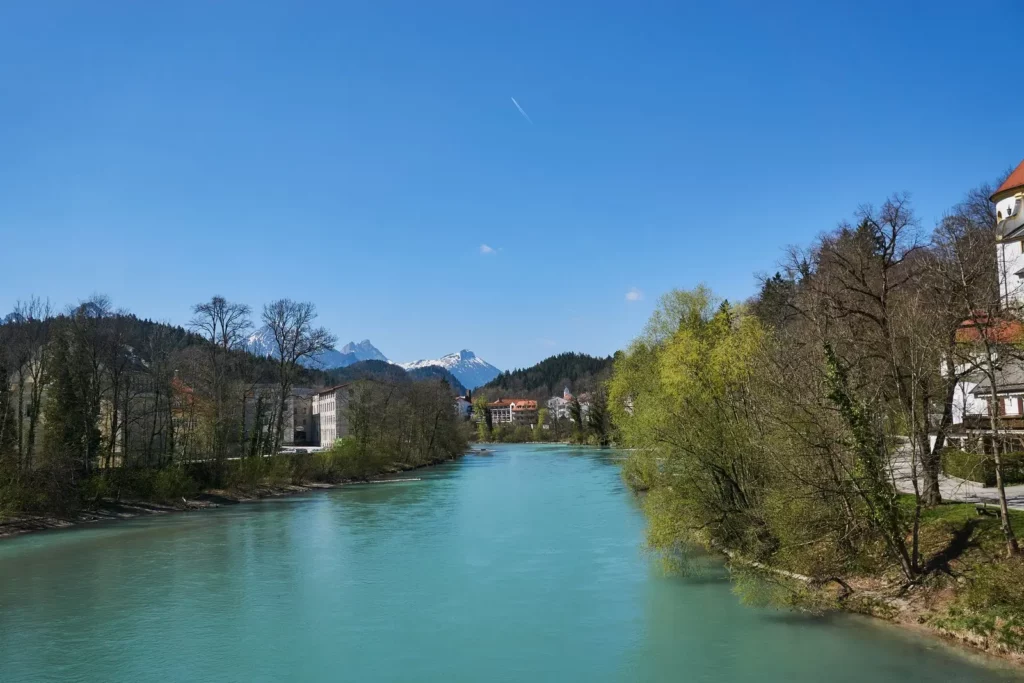
Follow me
Weißensee, Hopfensee
Weißensee is a beautiful blue-green lake with a loop trail.
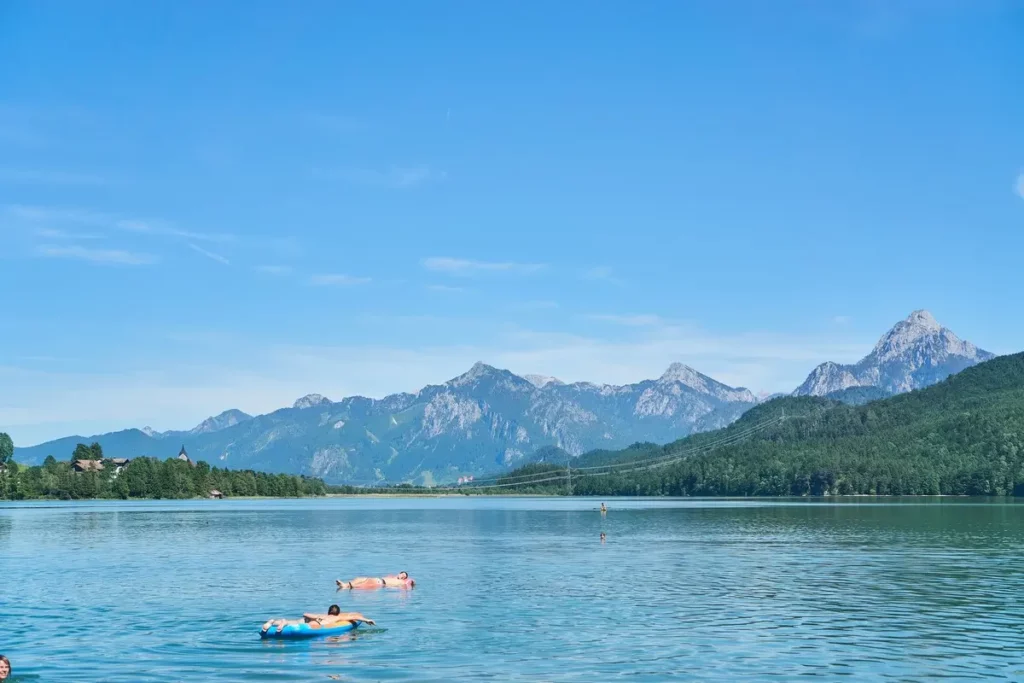
Hopfensee hat einen Kinderwagenweg.
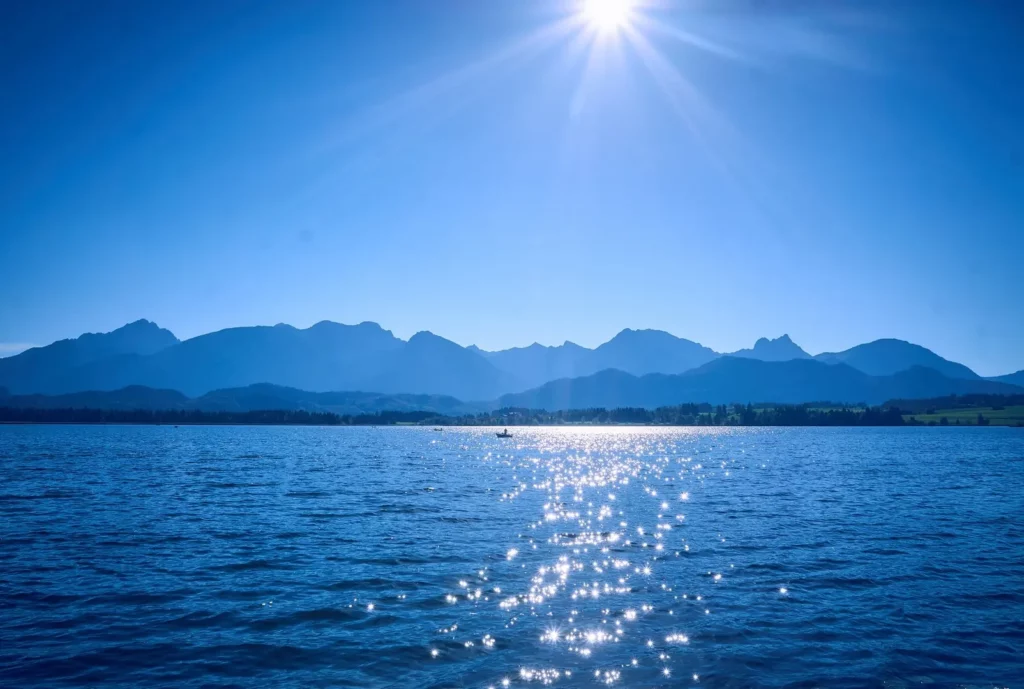

Waterfall on the Lech River
The waterfall on the Lech River is located near the historic center upstream of the Lech. You can get there on foot (20 minutes) along any bank of the river, and it’s best to go here by bike (we rode along the left bank) – there are wonderful bike paths everywhere.
In winter, the waterfall is less full-flowing, but the water takes on a stunning emerald hue.
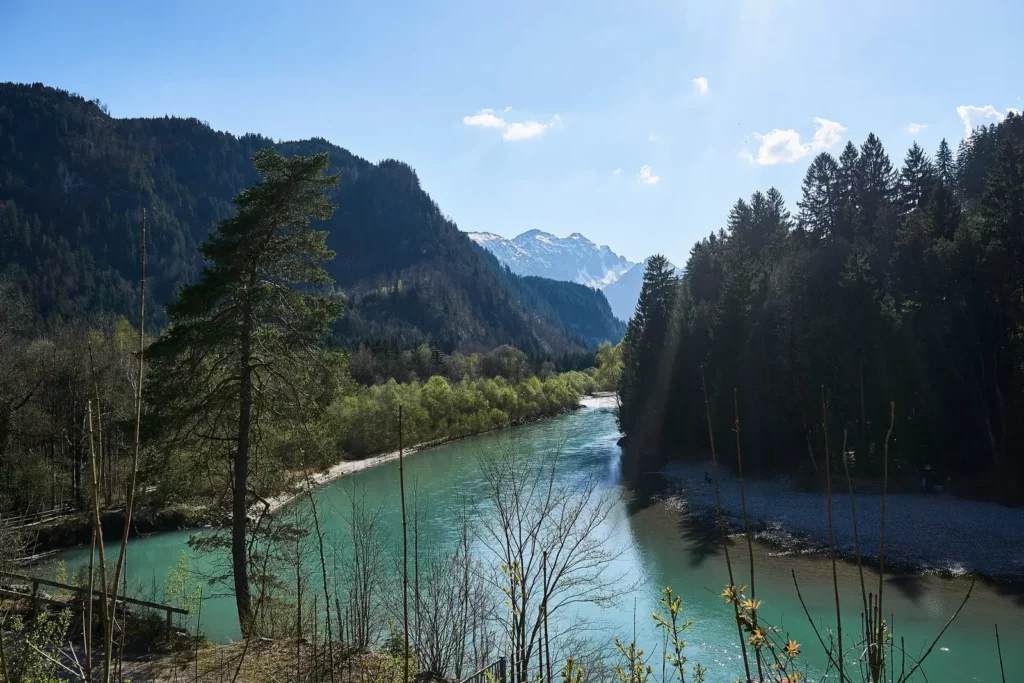
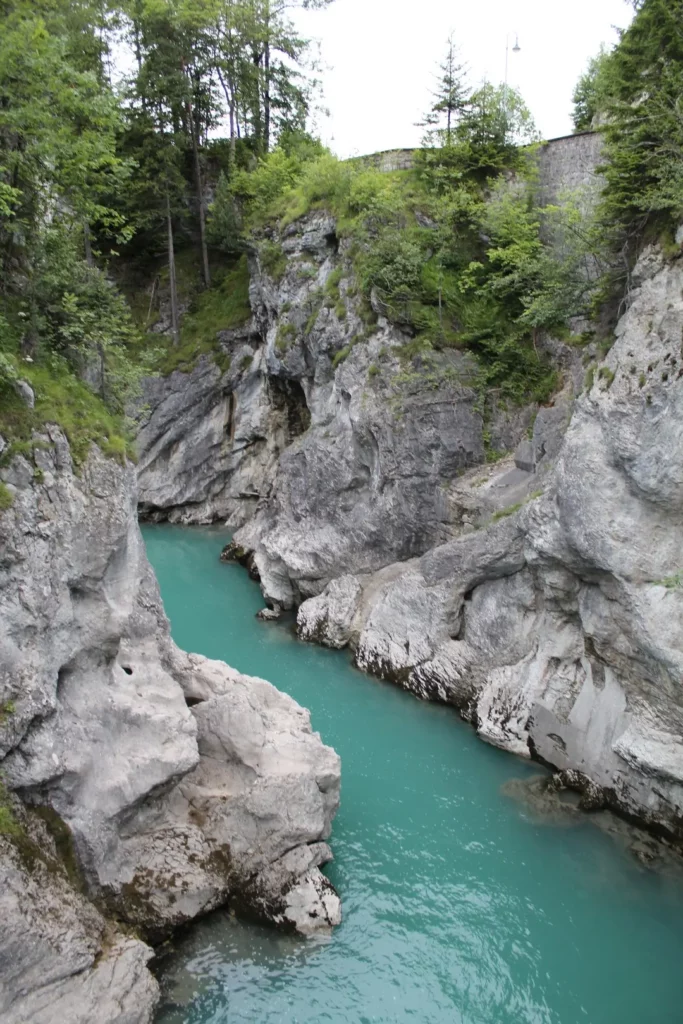
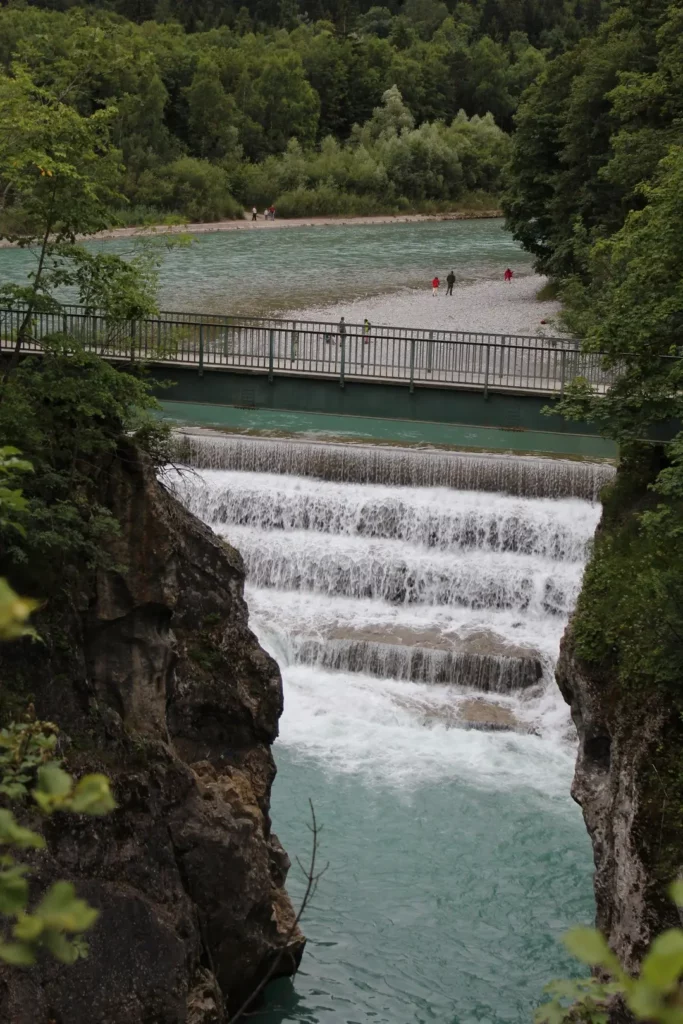
Schwansee
Another lake in the area is the famous Swan Lake, or Schwansee. The swan is a symbol of Schwangau, and it is not difficult to find information on the Internet that Ludwig associated himself with the swan knight Lohengrin. As far as I was able to understand from conflicting information on the Internet, Tchaikovsky first heard about Swan Lake and wrote a ballet, and only then visited Bavaria.
Schwansee, unlike the Alpsee, lies a little off to the side. You must carefully look at the signs on the road from Hohenschwangau to Füssen and turn left in time.
Both in Schwansee and in Alpsee they bathe. We swam in Schwansee – it is smaller, there are footbridges and even a small medical center. The locals also go there. There is a well-equipped swimming pool on Alpsee (most likely, paid) – 15-20 minutes on foot along the left bank. In any weather, an alternative to the lakes will be the Royal Baths – a thermal pool in Schwangau.
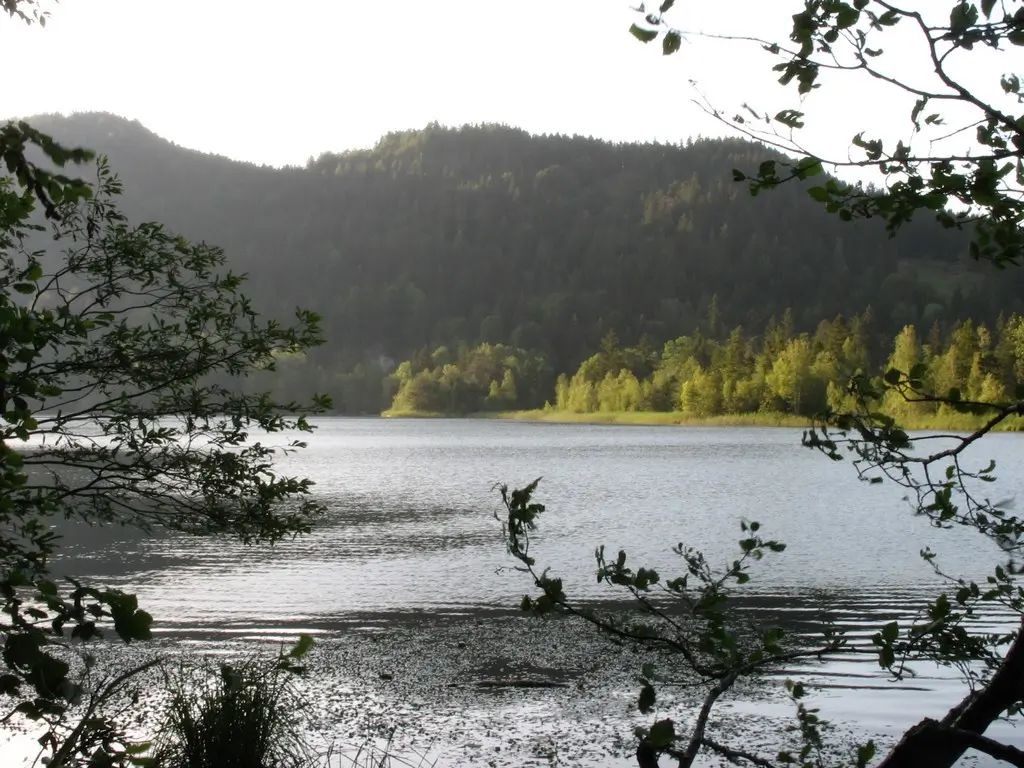

This is where we end with Schwangau and Füssen, but we don’t end with the region. In fact, you can spend at least a week here, and with swimming in the lakes also two weeks, visiting the nearest mountains and Austria. Attractions and links can be found on maps of attractions.
Neuschwanstein Castle Part 1
Allgäu attractions map
Map of attractions from Bregenz to Innsbruck
Reutte
Zugspitze Arena
Linderhof
Do you enjoy the site without cookies? This means that I work for you at my own expense.
Perhaps you would like to support my work here.
Or change your cookie settings here. I don’t use personalized ads

